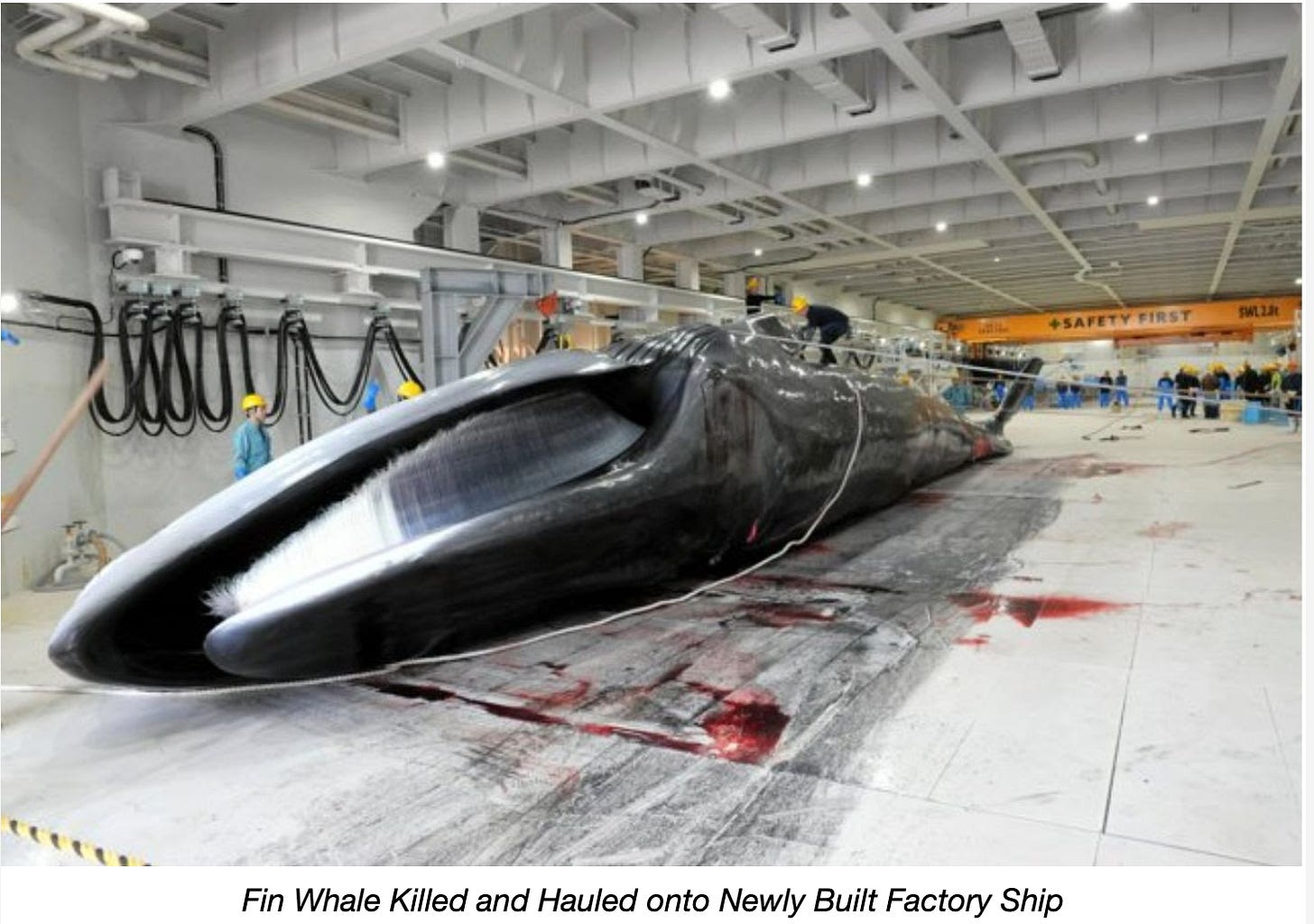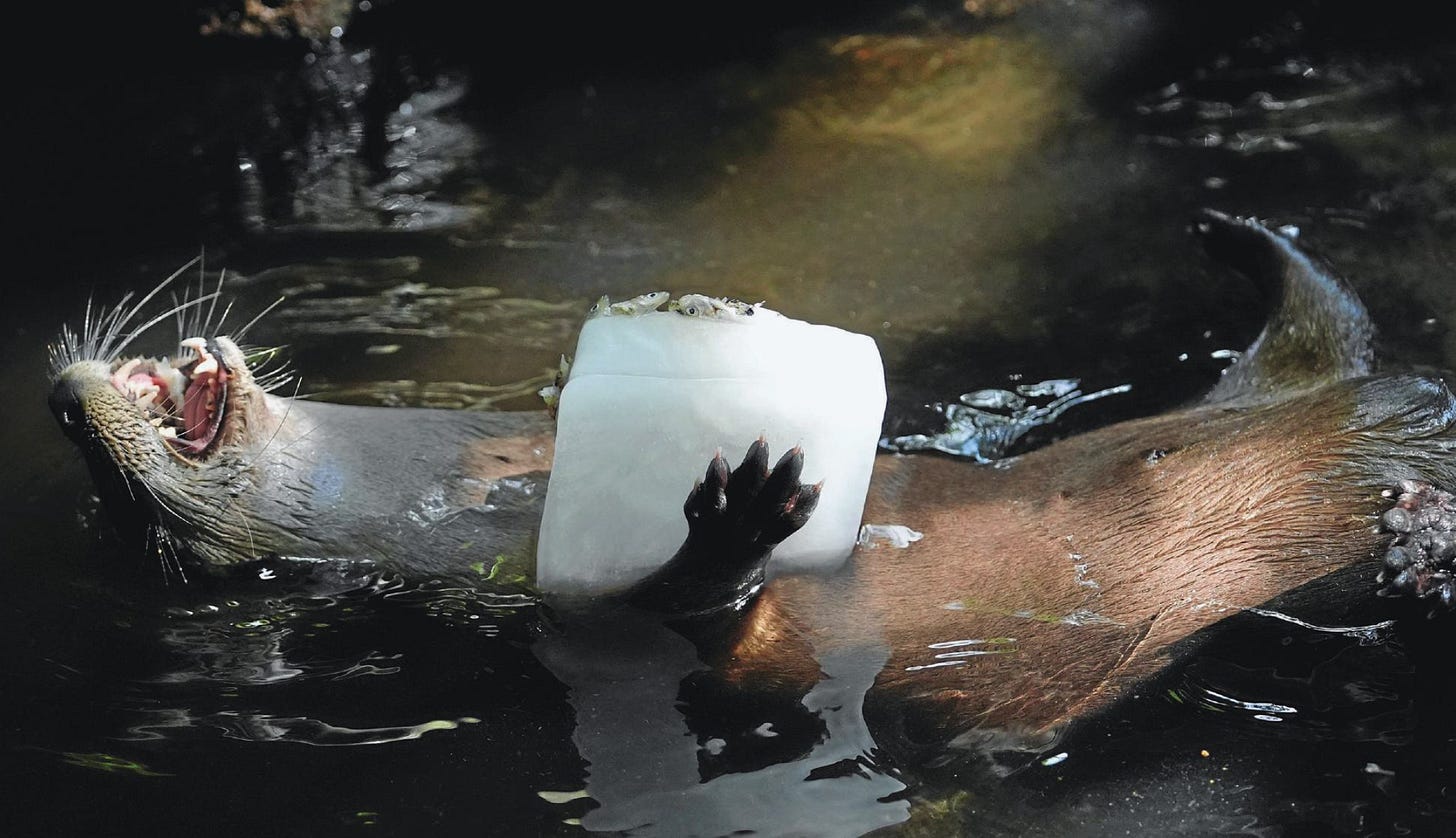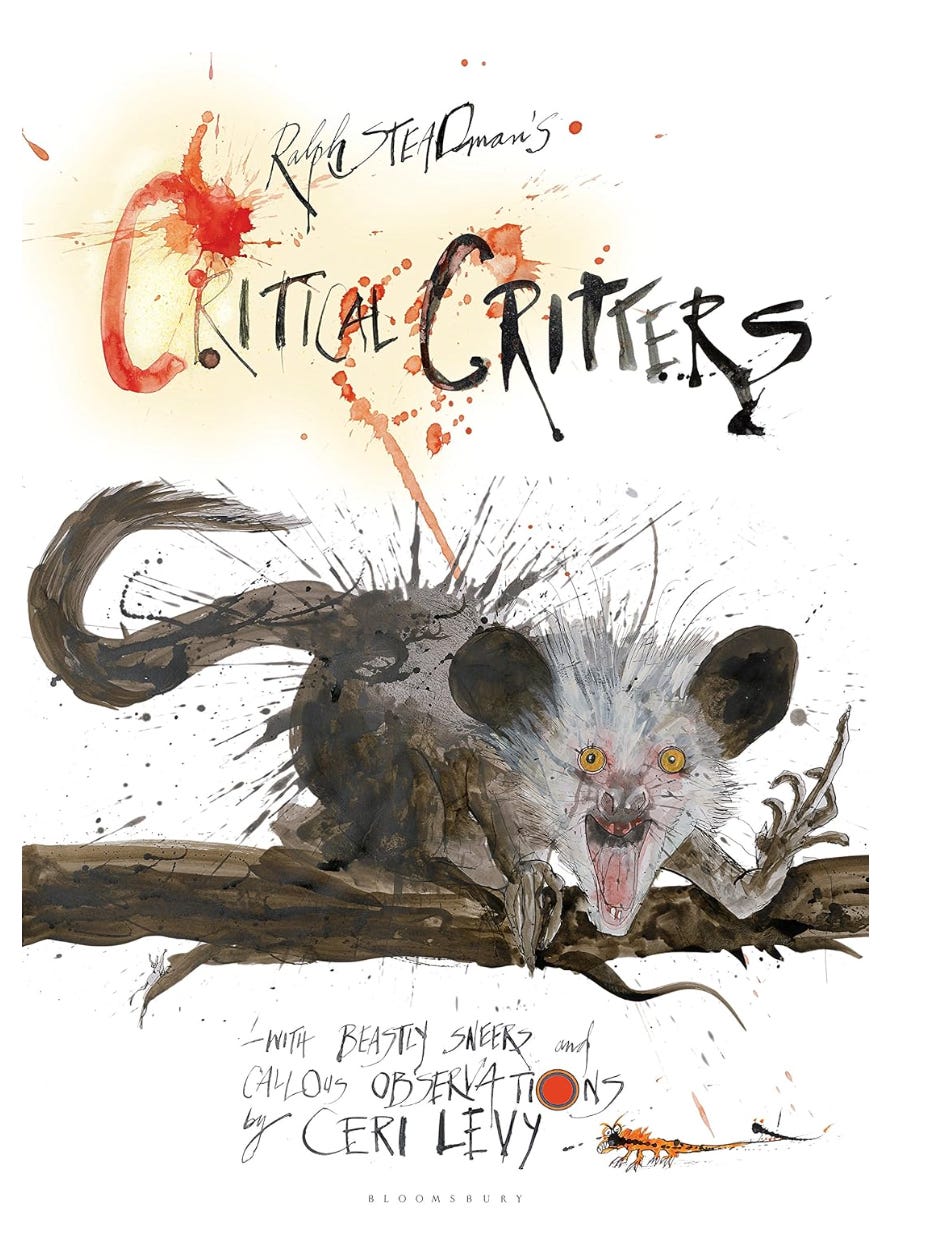These two photographs kind of shocked me. The first one is devastating. One of the largest, most beautiful mammals on Earth laid out on a ship's killing floor, a butcher’s carving block. This fin whale, second largest creature on the planet, will be carved up for what? Sushi? Cat food? Think of the screams and the pain as she was hit with an exploding harpoon and hoisted up on hooks into the chute.
This is a freshly slaughtered fin. “Less than 10 days after the arrest of Sea Shepard’s Captain Paul Watson in Greenland, Japan harpooned its first endangered fin whale in over 50 years, confirming suspicions that a return to high seas slaughter of the world’s largest mammals was always its intention.”
According to Jimmy Whales and our friends at Wikipedia, “the fin whale was a prized kill during the ‘golden age’ of whaling, from the early 19th century through the late 20th century. Over 725,000 fin whales were reportedly taken from the Southern Hemisphere between 1905 and 1976. Post-recovery numbers of the southern subspecies are predicted to be less than 50% of the pre-whaling population, even by 2100, due to long-lasting impacts of whaling and slow recovery rates. As of 2018, it was assessed as vulnerable by the IUCN.[2]” They live to be 90 years old, like us, if we’re lucky.
This is why the Japanese put out a secret order (like a lettre de cachet from the Ancien Regime of France?) to the Danes to arrest Captain Paul Watson at a refueling stop in Greenland as he was about to sail the M/Y John Paul DeJoria through the northwest passage to Japan’s watery killing fields in the Pacific. Had he made it, the crew might have been able to stop this whale's grisly death and the coming slaughter of many more.
And then we look at this otter on his back cooling off with a block of ice frozen with
smelt fish as a treat. It’s a relief after viewing the dead whale. At first. It's funny, to us, as if Ralph Steadman illustrated a new version of The Wind and the Willows, and also a clever approach by kindly keepers at the Palm Beach Zoo and Conservation Society to intense heat, this week reaching the high 90sF. But what it shows is the earth is warming, the rivers and seas are heating, and otters like this might not make it in the long run.
Two photos. Sad and crazy.
Like us?
If there can ever be an upbeat and witty look at extinction, it may come from the great British illustrator Ralph Steadman in his laugh-first, cry-later series of drawings called Critical Critters. Steadman is the other reason to read Fear & Loathing in Las Vegas.
Well, I guess we've been on a bit of a biodiversity jag these last few weeks, salmon, whales, otters, grizzlies, so next week we return to some intriguing science, the implications of deep sea mining, and an interview with Dr. Lisa Levin, emerita at the Scripps Institution of Oceanography. Levin is one of the world's leading experts on the abyss, that is, the very bottom of the deep.





Has he actually been extradited to Japan? We cannot stop the genocide in Palestine. What's missing from this article is the great extinction which is occurring right now and under reported and never mentioned in any classroom. We are every bit as barbaric as the first whalers who used well oil to light the hallway. We have not evolved, technology has not brought light to our evils , it has rather, distracted and diluted our focus and displaced our wisdom with preoccupied short attention span theater of self-fulfilling pacifying distraction